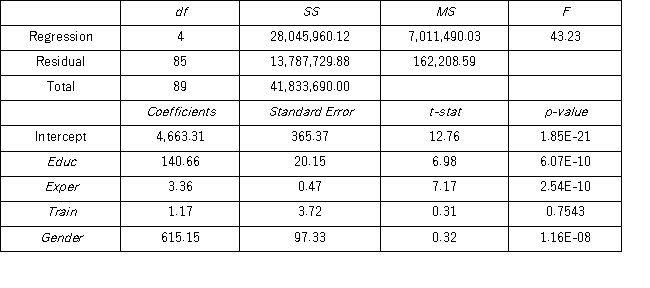To examine the differences between salaries of male and female middle managers of a large bank,90 individuals were randomly selected,and two models were created with the following variables considered: Salary = the monthly salary (excluding fringe benefits and bonuses) ,
Educ = the number of years of education,
Exper = the number of months of experience,
Train = the number of weeks of training,
Gender = the gender of an individual;1 for males,and 0 for females.
Excel partial outputs corresponding to these models are available and shown below.
Model A: Salary = β0 + β1 Educ + β2 Exper + β3 Train + β4 Gender + ε  Model B: Salary = β0 + β1 Educ + β2 Exper + β3 Gender + ε
Model B: Salary = β0 + β1 Educ + β2 Exper + β3 Gender + ε  When testing the individual significance of Train in Model A,what is the test conclusion at 10% significance level?
When testing the individual significance of Train in Model A,what is the test conclusion at 10% significance level?
Definitions:
Cross-sectional
A type of observational study that analyzes data from a population, or a representative subset, at a specific point in time.
Prenatal Period
The developmental phase before birth, encompassing the time from conception to the onset of labor.
Conception
The process of forming an idea or the initial stage when an idea, theory, or plan is formed in the mind.
Birth
marks the process of coming into life or entering the world, typically referring to the moment when a baby emerges from its mother's womb.
Q2: If the regression framework is used to
Q32: Quarterly sales of a department store for
Q33: The following Excel scatterplot with the fitted
Q35: A manager at a local bank analyzed
Q39: Psychology students want to determine if there
Q57: It is believed that the sales volume
Q80: The following data show the demand for
Q98: Which of the following is an estimated
Q105: Prices of crude oil have been steadily
Q121: The accompanying table shows the regression results